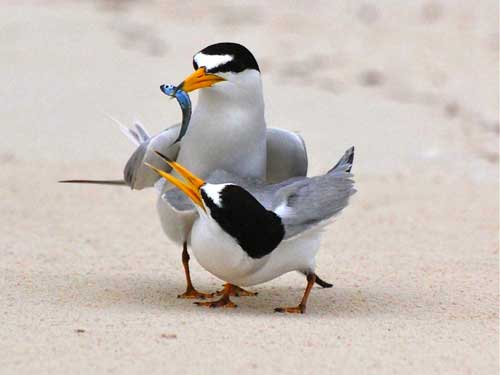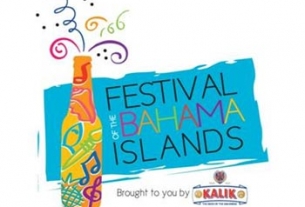 A colony of some 20 least terns, the smallest members of the gull and tern family and a bird that has been on the endangered species list in the United States since 1985, have been spotted nesting in Palm Cay, the upscale beachfront community on Nassau’s southeastern shore.
A colony of some 20 least terns, the smallest members of the gull and tern family and a bird that has been on the endangered species list in the United States since 1985, have been spotted nesting in Palm Cay, the upscale beachfront community on Nassau’s southeastern shore.
The colony was spotted by Bahamas National Trust President Neil McKinney.
“The colony of nests is at the very end of one of the five whale tail groynes at Palm Cay,” said McKinney. “They were never here before the groynes were built.” The groynes were part of a $1.5 million-plus beach reconstruction project completed late last year, transforming a narrow beach into one of the widest and finest in New Providence with more than a quarter mile of powdery sand.
“The environment is just right,” said McKinney, “but that is why we want to ask people not to disturb the nests which are little more than a scrape in the ground where the female sits on her eggs. If people approach and the female stays away for even 20 or 30 minutes, the eggs can overheat in the sun and die.”
In the U.S., it is illegal to kill, harm or cause damage to an endangered species.
“We knew this was a great place to live,” said Palm Cay Sales & Marketing Director Zachary ‘Zack’ Bonczek, “We’re just proud to have the latest little residents and will make sure that all our other neighbours know not to disturb the area. We will do whatever we can to protect them.”
Located at the southeastern shore of New Providence, Palm Cay is a 200-acre, $200 million community with lots, townhomes and condos available and Nassau’s largest marina in number of slips, 192, along with other amenities including pool and clubhouse. Plans call for a small, boutique marina hotel, restaurant, fitness centre, tennis courts and more. Palm Cay is the site of junior sailing, the headquarters for the Marlin Marine Fishing Tournament, the BSFN Boat Show and numerous boating and cultural events.
By Diane Phillips & Associates



